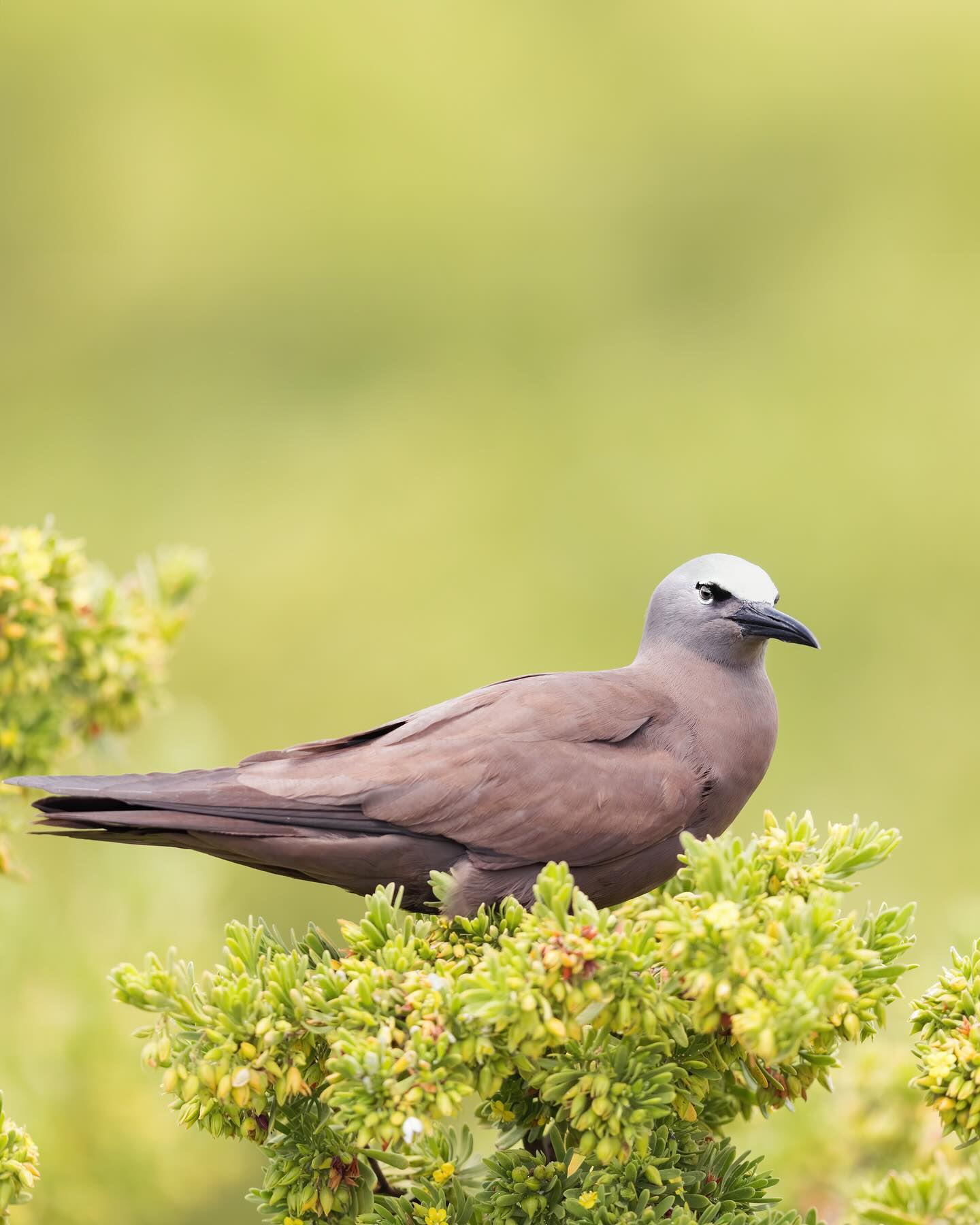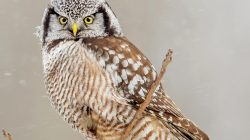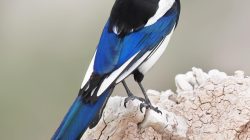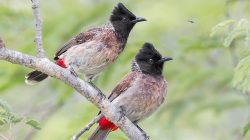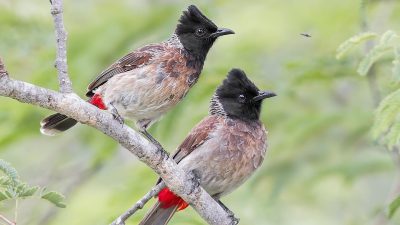Brown Noddy (Anous stolidus): An In-Depth Study of a Coastal Avian Species
Diajar.net – The Brown Noddy (Anous stolidus) is a fascinating seabird that inhabits tropical and subtropical regions around the world. Known for its distinctive appearance, behavior, and ecological role, the Brown Noddy is a crucial component of the coastal ecosystems it inhabits. In this article, we explore the geographic range, habitat, physical description, reproduction, lifespan/ longevity, behavior, communication and perception, food habits, predation, ecosystem roles, economic importance, and conservation status of the Brown Noddy, shedding light on its significance in nature and its interactions with humans.
Geographic Range
The Brown Noddy has a wide distribution across the tropical and subtropical oceans, particularly in the Atlantic and Pacific Oceans. This species is found on oceanic islands and coastal areas from the Caribbean Sea and Gulf of Mexico to the Indian Ocean and South Pacific. The Brown Noddy’s range extends from the western coast of Africa and the Mediterranean in the east to the Galápagos Islands in the west.
In the Atlantic Ocean, the Brown Noddy is often seen around the Antilles, Bermuda, and the Bahamas. In the Indian Ocean, it is present on islands like Madagascar and the Comoros Islands, as well as parts of the Red Sea. The bird is also widespread along the coasts of India, Sri Lanka, and Southeast Asia, reaching as far as Australia and New Guinea.
The geographic range of the Brown Noddy is vast, reflecting its adaptability to various oceanic environments, though it remains largely dependent on the availability of nesting sites on remote, undisturbed islands and coastal regions.
Habitat
The Brown Noddy primarily inhabits coastal and offshore islands, especially those with sparse vegetation. These birds prefer isolated islands or rocky cliffs, which provide both nesting sites and protection from land-based predators. Brown Noddies are typically found in tropical and subtropical regions, where the weather is warm year-round and food is abundant.
These birds are often found in colonial nesting sites on islands that are far from human activity. The coastal cliffs and caves of these islands provide suitable locations for the birds to nest, while the surrounding waters supply a rich source of food. The Brown Noddy is highly adaptable, thriving on islands with limited human presence and minimal disturbances. This preference for remote areas ensures that the species maintains a degree of isolation, crucial for their survival and reproductive success.
The Brown Noddy is a marine species, but it is also found in mangrove swamps, estuaries, and coastal lagoons, which serve as feeding grounds. The availability of calm waters and abundant fish and plankton is essential for the bird’s survival.
Physical Description
The Brown Noddy is a medium-sized seabird, characterized by its dark brown plumage and white underparts. The bird’s size typically ranges from 35 to 40 cm (14 to 16 inches) in length, with a wingspan of approximately 80 to 95 cm (31 to 37 inches). The Brown Noddy’s most striking feature is its dark brown or blackish-brown upperparts, which contrast sharply with the white underparts and the dark cap that covers its head.
The bird’s long wings are pointed and slender, giving it a sleek, graceful appearance as it glides over the ocean. The tail is forked, characteristic of many species within the tern family. Its beak is sharp and dark, with a slight upward curve, perfect for catching small fish and plankton during its foraging trips.
Brown Noddies have dark eyes and are known for their striking yellowish-brown legs and webbed feet, which aid in swimming and perching on rocks and other surfaces. Their flight pattern is typically graceful and high, often soaring in search of food or while migrating.
Reproduction
The Brown Noddy is a colonial nester, often forming large, tight-knit breeding colonies on isolated islands. Mating pairs are typically monogamous during the breeding season, with one male and one female pairing for the duration of the season. Brown Noddies usually begin breeding in early spring and continue through the summer, although the exact timing can vary depending on geographic location and environmental conditions.
The female Brown Noddy lays a single egg, which both parents take turns incubating. The nesting site is typically a shallow depression in the ground or a sheltered nook in the rocks. The egg is usually white or light brown, with a smooth texture, and both parents share the responsibility of protecting and warming it. Incubation lasts about 26 to 30 days, and the chicks hatch blind and helpless.
After hatching, the chicks are fed a diet primarily consisting of fish and plankton, which the parents regurgitate. The young are altricial, meaning they are dependent on their parents for food and care for several weeks after hatching. The chicks fledge at about 40 to 50 days of age, and after leaving the nest, they become independent but remain in the colony for a while before dispersing.
Lifespan/Longevity
The average lifespan of the Brown Noddy in the wild is estimated to be around 10 to 15 years, although individual birds can live much longer under favorable conditions. The species faces numerous challenges during its life, including threats from predators, food shortages, and environmental hazards, which can reduce lifespan.
Despite these challenges, the Brown Noddy has a relatively high survival rate once it reaches adulthood. The species’ colonial nesting behavior also helps to mitigate risks, as large colonies offer some protection against predation. However, Brown Noddies are still vulnerable to environmental changes, such as severe storms or changes in sea level, which can impact their reproductive success and overall longevity.
Behavior
The Brown Noddy is a highly social and gregarious bird, typically seen in large colonies of several hundred individuals during the breeding season. Outside of the breeding period, these birds may still form smaller groups, although they often forage alone or in pairs. Brown Noddies are generally non-territorial, with individuals sharing feeding grounds and nesting sites with little conflict.
During the breeding season, the males engage in courtship displays to attract females, which may include aerial displays, calling, and presenting food to the female. The Brown Noddy is also known for its strong migratory behavior, with some populations migrating seasonally in search of food or more favorable breeding grounds.
Communication and Perception
The Brown Noddy communicates primarily through vocalizations, which include a range of whistles and squawks. These vocalizations serve various purposes, such as attracting mates, defending territory, and maintaining group cohesion within the colony. The calls are often loud and distinct, and the bird’s vocalizations can be heard over long distances, especially during the breeding season.
In addition to vocal communication, the Brown Noddy uses visual displays to communicate with others in its colony. These may include flashing its wings, head bobbing, and aerial maneuvers that signal specific messages to mates or other individuals.
Food Habits
The Brown Noddy is primarily a piscivore, meaning its diet consists mostly of fish. The bird forages by diving into the water or skimming the surface to catch fish and plankton. Brown Noddies typically feed on small fish species such as anchovies, sardines, and herring, as well as invertebrates like krill and copepods. The bird’s sharp beak is well adapted for catching these fast-moving prey.
The Brown Noddy’s foraging technique involves flying over the water in search of schools of fish, diving from heights of up to 30 meters (about 100 feet) into the water, or simply dipping its head to grab fish near the surface. Brown Noddies are particularly adept at feeding in groups, and their social nature allows them to locate food more efficiently.
Predation
As a seabird, the Brown Noddy faces various threats from predators both on land and at sea. On the islands where they nest, their main predators are mammals, including rats, cats, and mongoose, which can raid nests and consume eggs or chicks. On the water, Brown Noddies may also face threats from larger seabirds and fish-eating predators such as sharks and sea eagles.
In order to protect their eggs and chicks, Brown Noddies are known to nest in large colonies, which offers some level of defense against predators. Additionally, the sharp beak and aggressive defense of adult birds help deter potential threats.
Ecosystem Roles
The Brown Noddy plays an important role in the ecosystem by acting as both a predator and a prey species. As a piscivore, it helps maintain the population balance of small fish and invertebrates, preventing any one species from becoming overly abundant. The bird also serves as food for higher predators, contributing to the food web of coastal ecosystems.
In addition, the Brown Noddy’s guano (bird droppings) contributes to the fertilization of the islands and coastal habitats where it nests, enriching the soil and promoting plant growth. This has indirect effects on local vegetation and the overall health of coastal ecosystems.
Economic Importance for Humans: Positive
The Brown Noddy holds economic importance for humans in various ways. In ecotourism, it draws attention from birdwatchers and nature enthusiasts who seek to observe this unique seabird in its natural habitat. Coastal islands that host large Brown Noddy colonies often become tourist attractions, generating revenue from tours, accommodations, and local services.
Additionally, the Brown Noddy contributes to fisheries by helping regulate populations of small fish, which can otherwise overpopulate in coastal waters. Its role in controlling plankton and small fish populations may indirectly support local fisheries and marine health.
Economic Importance for Humans: Negative
On the negative side, the Brown Noddy can sometimes be seen as a nuisance in agricultural settings, particularly where they feed on fruits or crops that are grown near their nesting areas. While this is relatively rare, their presence near orchards or agricultural fields can occasionally lead to damage to certain crops, especially during migration or when food is scarce.
Moreover, because Brown Noddies often nest in large colonies, their guano can accumulate in large quantities, which may cause environmental damage or create sanitation concerns in specific areas, especially on islands with human settlements or infrastructure.
Conservation Status
The Brown Noddy is currently listed as Least Concern by the International Union for Conservation of Nature (IUCN) due to its widespread distribution and stable population. However, the species is not without threats, particularly from habitat destruction, climate change, and invasive predators. While the Brown Noddy is not in immediate danger of extinction, conservation efforts are necessary to maintain healthy populations and safeguard nesting sites from human encroachment and environmental threats.
Contributors
Many researchers, wildlife organizations, and conservationists have contributed to the understanding of the Brown Noddy’s ecology and conservation needs. Ornithologists working in marine bird studies have provided valuable data on the species’ behavior, breeding patterns, and migratory routes. Additionally, organizations such as BirdLife International and local wildlife conservation groups have been instrumental in protecting the bird’s habitat and promoting efforts to mitigate threats from invasive species and environmental degradation.
Conclusion
The Brown Noddy is a remarkable seabird with a broad geographic range and significant ecological roles in coastal ecosystems. Its striking appearance, social behavior, and ability to adapt to various environments make it an intriguing species to study and observe. While it is not currently endangered, ongoing conservation efforts are essential to ensure the species’ long-term survival. By preserving its coastal and island habitats, we can continue to enjoy the presence of the Brown Noddy and its important contributions to the natural world.
